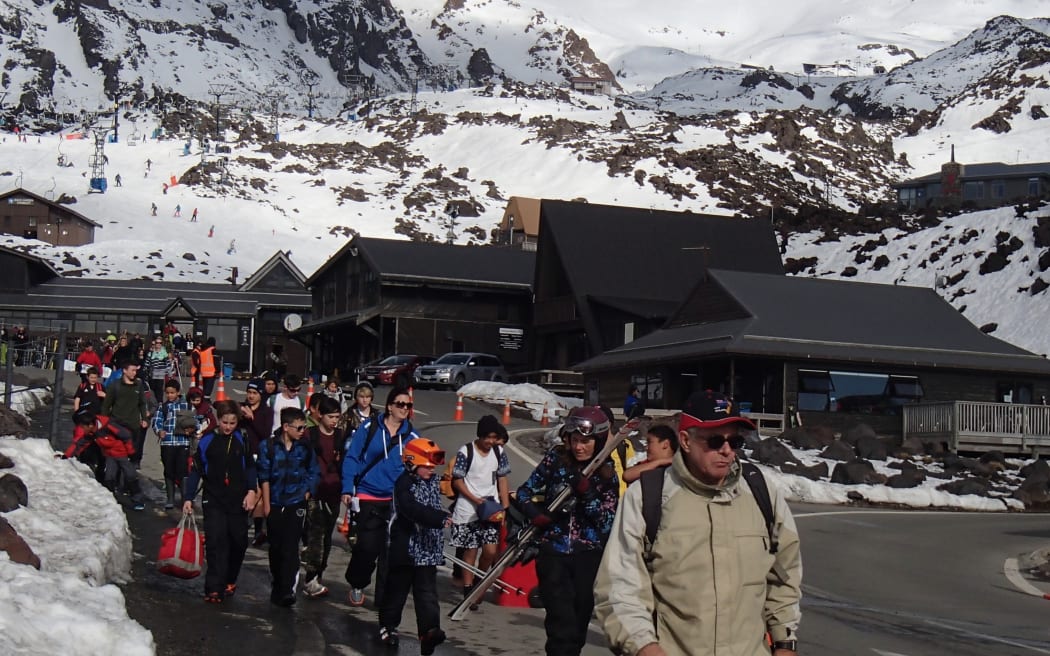The Ruapehu Saga
0For some, the biggest news out last week was the move of Ruapehu Alpine Lifts (‘RAL’), the operators of the Whakapapa and Turoa skifields on the mountain, to place itself into voluntary administration. Three tough years – two down to the Covid pandemic and this year’s poor snowfall – had forced management’s hand.
My connection to the mountain goes back to 2008 when I tried snowboarding for the first time and was immediately hooked. I brought my first season pass in 2010, and when they were made available in 2016, I splashed the cash for a Life Pass. I’ve usually spent between 12 and 17 days each season riding there for over a decade, and bar a couple of day trips to Porters in Canterbury it’s the only place I’ve ridden at. Through in the memories – its where my now-wife and I met (she’s become a skier and is also a Life Pass holder) – and the friendships I’ve made with people in Ohakune, you can say I’m invested in the place.
Yet when the news broke that Administrators had been appointed and after the initial shock abated, I was left with the feeling that this had been coming; after all, it was spelt out in last year’s financials that a poor season would leave RAL in distress.
So, how did it come to this? Let’s start with some history.
*****
Whakapapa, on the northern slopes, is the oldest of the two having first been skied in 1913. RAL itself was formed in 1951 and installed the first chairlift in 1954; it was opened by Sir Ed Hillary fresh off conquering Mt Everest. The 70’s and 80’s saw the field rapidly expand, somewhat haphazardly, as club lodges sprang up, new lifts went in, and new terrain opened; at one point three different outfits ran lifts on the field, but RAL eventually acquired all the licences.
Skiing didn’t really begin on Turoa on the southwest slopes above Ohakune until the mid-60’s, and it didn’t get developed like Whakapapa did over the same period. That changed when Alex Harvey Industries – later part of Carter Holt Harvey – obtained a licence to develop and operate the field as a commercial entity, opening on the same day in 1979 that I entered the planet (coincidence eh?). It would be sold twice before events of the late 90’s saw its ownership collapse and it was purchased from by RAL in 2000.
In a forerunner to these times, Turoa went through three bad seasons in four. Both 1995 and 1996 were badly affected by Ruapehu’s most recent eruptions, and 1998 was an even worse snow season than this one with the season lasting a mere six weeks.
There is a third field on Ruapehu, the independent, small, club-run Tukino field on the eastern side facing the Desert Road.
Two more points. As currently constituted, RAL is an unusual hybrid not-for-profit company. Shareholders don’t receive dividends and profits are reinvested into the fields as part of its Income Tax-free status. Secondly, Mt Ruapehu is a tough environment. It’s marine oceanic climate often sees buildings and equipment covered in a hard heavy layer of rime ice, a challenge to remove and something not faced by the South Island fields who sit in the lee of the mountains, and a burden on operations.
*****
So how have things reached the point they’re at now?
For a good number the symbol is RAL’s newest asset, the SkyWaka Gondola; an aerial ropeway that whisks guests along the 1.8km distance and 400m vertical rise between Whakapapa’s base area and the Knoll Ridge Cafe in six minutes. Paid for by a combination of a grant and loan from the Provincial Growth Fund and bonds raised from other sources, it’s the centrepiece of RAL’s strategy of growing revenue outside of the 4½ months when there’s snow. But where those South Island fields can offer mountain biking RAL cannot, a function of Ruapehu’s legal (Department of Conservation) and spiritual (the Ngati Tuwharetoa and Ngati Rangi iwi) owners and its status as both a National Park and World Heritage site.
The SkyWaka is an impressive bit of engineering but came at a cost; $25 million dollars and over $15 million added to the liabilities in the balance sheet. Opponents contend it’s a financial millstone that looms large in the current predicament, and while accepting that the lift it replaced was nearing the end of its life, the replacement was needlessly gold-plated and further evidence that the company, founded by skiers for skiers, had lost its way and its touch with its loyal and paying customers.
Many of those loyal customers have done what I have, purchased a Life Pass, and made a long-term investment in the company. RAL is alone amongst New Zealand’s operators for doing this but it’s a calculated risk, banking on bringing in a chunk of cash for a capital project in exchange for seasonal revenue down the line but also in the knowledge that the average active use of those passes are less than 12 years. Money from recent raises went into two new lifts, improved facilities, and snowmaking equipment that can create the white stuff in temperatures well above zero at Whakapapa, improved facilities and the High Noon Express chairlift at Turoa, and a little over 20 years ago the funds for RAL to buy Turoa out of liquidation. We aren’t shareholders, but we’re invested.
*****
Setbacks aren’t new to RAL. Even as early as 1956 a brand-new chairlift was destroyed by the rime ice. Twice since being installed in 2006 the High Noon has been taken out of service; the following year one of the original towers collapsed under the weight of a rime ice storm (builders Doppelmayr rebuilt the chairlift at their own cost with more and shorter towers) while in 2018 – a day that I was on the mountain – an avalanche, fortunately before the lifts opened, folded another tower over on itself as well as destroying a snow groomer that was in its path. And in 2009 an arsonist made a late-night hike to burn the previous Knoll Ridge chalet to the ground as well as a maintenance shed with three groomers inside. But those were overcome.
The recent years have – excuse the pun – been the perfect storm. Both 2020 and 2021 were great snow years but ruined by Covid. In 2020 RAL faced the same gathering restrictions as everyone else which drastically reduced the numbers that could be on the slopes on any day; days that would normally have upwards of 3,000 people on each were restricted to less than half of that. 2021 started positively but just as the snow fell in buckets the Delta variant made its appearance, plunging the country back into lockdown. For RAL, this cost it both a few weeks of anyone in the best conditions of the year, but also anyone from north of the Bombay Hills (and their wallets) for the rest of the season.
And then there’s 2022, and the worst season snow wise since 1998. While some are quick to blame climate change – and that’s a factor – the answer lies in weather patterns and specifically La Nina. La Nina brings in warm air from the northeast, which is the worst conditions to produce snow and this year has been a particularly aggressive one, just as 1998 was. Forecasters predict next year to be neutral with a return to the snow-friendlier El Nino pattern in 2024 which offers hope for the future, but too late for the now.
*****
So where to next? It’s a complex beast and the future of the company, and perhaps even skiing and riding on the Ruapehu, is in the hands of the Administrator. The hope is that the company can be saved, or an investor found, but in the true form of Ruapehu users groups are already banding together to try and crowdfund a solution looking to return it to its roots.
It’s not without its challenges. For the bright, shiny, and new SkyWaka and Rangitira chair some of the infrastructure is aging. Whakapapa’s upper mountain relies on a trio of T-Bars which is somewhat antiquated by New Zealand standards, let alone for visitors from overseas. Turoa might not have any of those, but both lifts from the base area and the one that covers the middle elevations of the field have birth certificates that pre-date 1990. The failure to replace these is one criticism of many levelled at the Board.
The loss, or even partial shutdown, if it came to it would be catastrophic. Not just to those that use it, but to all those who live around it in towns like Ohakune, Raetihi, National Park, Turangi, and even as far afield as Taupo who rely on the mountain and a massive blow to the Ruapehu District. And while the Government, through Stuart Nash who holds both the Regional Development and Tourism portfolios, has already ruled out assistance, there’s a big kicker.
In all the contractual print is a “make good” concession, that in the event of the end of snowsports the infrastructure needs to be removed. That alone would cost millions, and if the more than 40 clubs that have built lodges on the Whakapapa side walk away as well, then millions more would go on the bill.
So is this end for the North Island’s winter play area, or is a new dawn coming?
Follow Scott on Twitter

